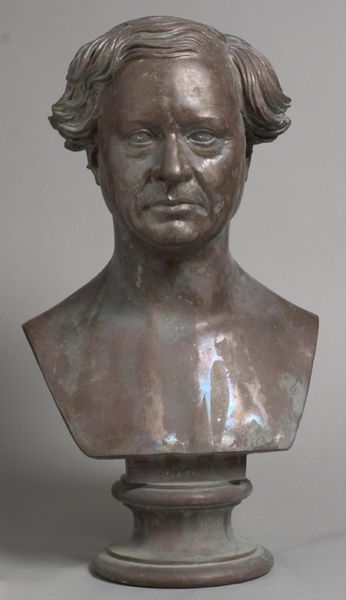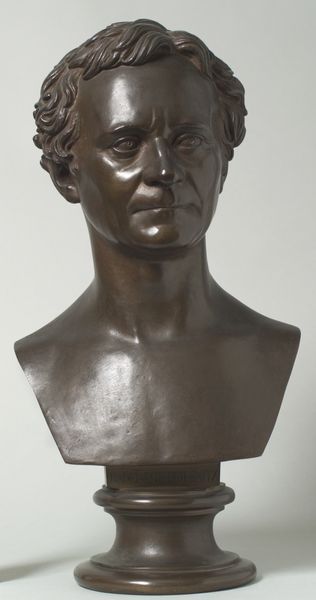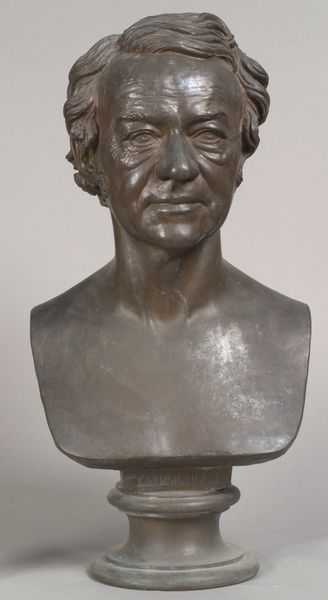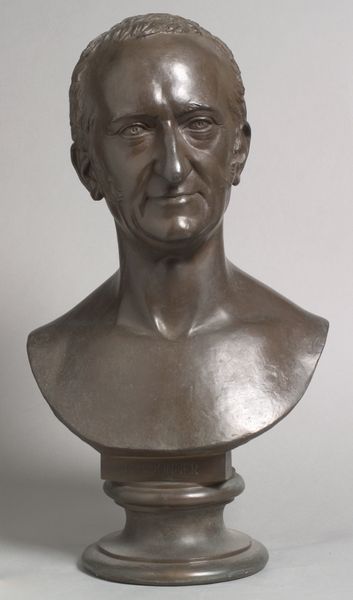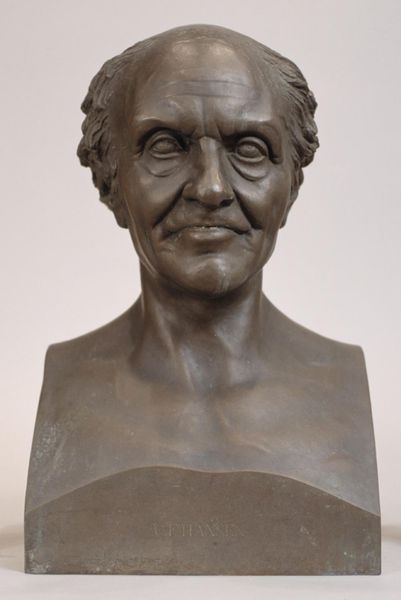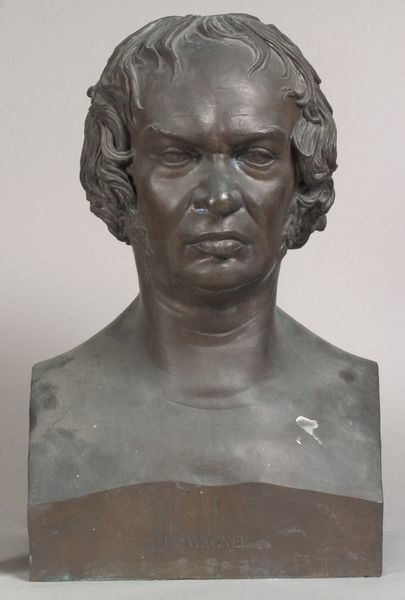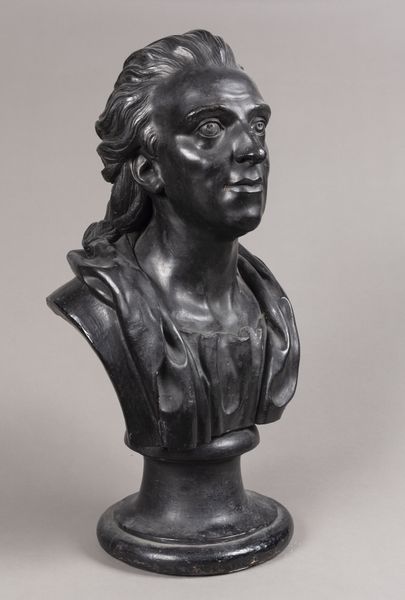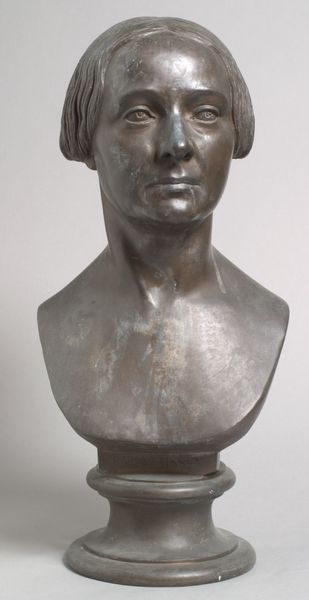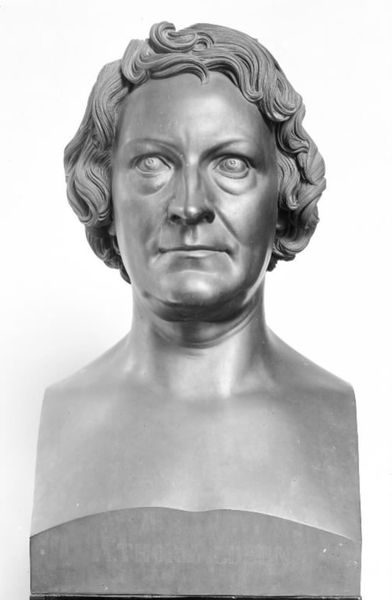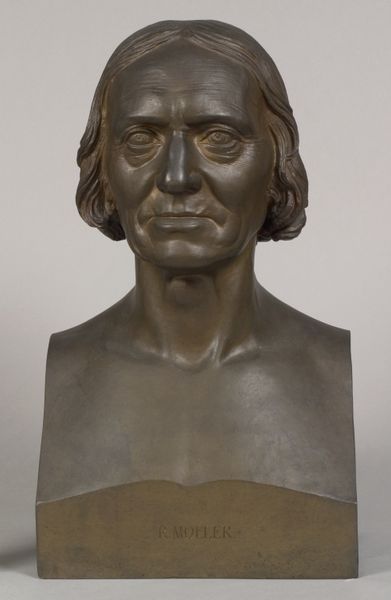
bronze, sculpture
#
portrait
#
neoclacissism
#
sculpture
#
bronze
#
sculpture
#
realism
Dimensions: 62.5 cm (height) (Netto)
Curator: Hello and welcome. We’re standing before a rather striking bronze bust titled "Signe (Casperfine Andresine) Puggaard, f. Andréa," crafted in 1853 by H.W. Bissen. It's currently held in the collection of the SMK, the National Gallery of Denmark. Editor: My first impression? A sense of quiet dignity, but also a hint of melancholy. There's a certain gravity in her expression, a story etched onto her face, even in bronze. And those slight imperfections in the casting, they make it feel so real. Curator: Indeed. Bissen was a master of Neoclassical sculpture, but with a touch of realism, as we see here. During the mid-19th century, portrait busts like these served not only as representations of an individual, but also as emblems of social status and character. They offered a tangible way to solidify a family's place within the societal framework. Editor: Right, these sculptures almost served like public profiles of the sitter. I imagine being sculpted in bronze was quite the statement back then. I wonder if she liked how Bissen portrayed her; she does not seem overly thrilled about it. Maybe that slight frown is telling, like a secret code that’s hard to tell at first. Curator: It is difficult to truly know that, isn't it? Although the intention might be lost to history, what is quite clear is the ambition that portraiture during this period hoped to impart to the general audience about its sitter. Sculptors, their clients, and subsequent viewers held portraiture as being so crucial in visualizing identity, and what that identity symbolized. This commission of Signe is an important marker in Danish cultural history, if only to better comprehend the motivations of the era's society. Editor: Well put. Art always ends up mirroring not just the subject but the society they live in. It's like capturing lightning in a bottle. Thanks to this piece and others like it, we can have a glimpse back into 1850's Denmark. Curator: A powerful way to contextualize history by humanizing and visualizing its figures. It gives us, the viewers, a shared space and way to learn, and continue learning about what it all could mean. Editor: Exactly! These artworks provide endless prompts that ask what it means to live. I'm constantly struck that we can keep engaging in dialogue, and this in particular. Curator: Very well said! I suppose now, we invite our visitors to formulate their own ideas about what Bissen’s “Signe (Casperfine Andresine) Puggaard, f. Andréa” means to them, as the discussions could keep flowing like the streams from which art and our life comes!
Comments
No comments
Be the first to comment and join the conversation on the ultimate creative platform.
